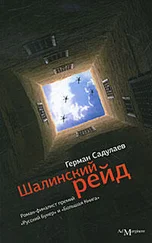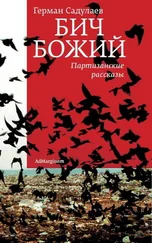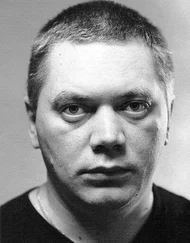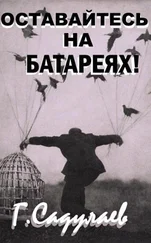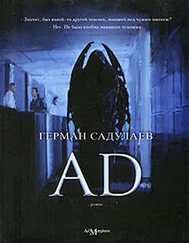From almost the very beginning of his reign, Helgi was involved in a conflict with the Khazar state, under whose protection the majority of Slavic tribes found themselves during that time.
“In the year 6392 [884], Oleg marched against the Northerners, and conquered the Northerners, and imposed a light tribute, and assured them that they need not pay tribute to the Khazars, saying: ‘I am their enemy, and there is no reason for you [to pay them].’”
“In the year 6393 [885], [Oleg] sent word to the Radimiches, asking them, ‘To whom do you pay tribute?’ And they answered, ‘to the Khazars.’ And Oleg said to them: ‘Do not give tribute to the Khazars, pay me instead.’ And they each gave Oleg a shcheliag , as they had given to the Khazars. And Oleg ruled over the Polians, and the Drevlians, and the Northerners, and the Radimiches, and waged war against the Uliches and Tivertses.”
What is important here is that Helgi imposed a light tribute on the Northerners, and demanded no more from the Radimiches than they had been paying to the Khazars. Evidently he pursued goals that were less military in nature than political: He aimed to constrain the Khazars and undercut their influence in the region.
The Tale of Bygone Years describes Oleg’s death, which gave Pushkin the plot for his poem, as follows: “And Oleg lived, ruling in Kiev, keeping peace between all the lands. And autumn came, and Oleg remembered his horse, whom he had put out to pasture, having decided never to mount him, for he had asked the soothsayers and sorcerers: ‘What will be the cause of my death?’ And one sorcerer had foretold: ‘Prince! Your beloved horse, whom you ride, will be the cause.’ Oleg took these words to heart, and he said: ‘I will never mount him, nor set eyes on him, ever again.’ And he ordered him to be fed and henceforth never to be brought to him, and he lived for several years afterward without seeing him, while he waged war against the Greeks. And when he returned to Kiev, and four years had passed, in the fifth year he remembered his horse, whom the soothsayers had prophesied would cause his death. And he summoned the master of the stables and said to him: ‘Where is my horse, whom I ordered to be fed and cared for?’ And he answered: ‘He died.’ Oleg laughed and belittled those sorcerers of old, saying: ‘The soothsayers speak falsely; it did not come to pass: The horse died, but I am alive.’ And he ordered a horse to be saddled: ‘Let me see his bones.’ And he came to the place in the field where his old steed’s bare bones and skull lay, and he dismounted, laughed, and said: ‘So this skull was to cause my death?’ And he stepped on the skull, and out of the skull crawled a snake, and bit him on the foot. And from the snakebite he took ill and died. All the people mourned for him with great laments, and bore him off, and buried him on a mountain called Shchekovitsa; and his grave is there to this day, it is known as the Grave of Oleg.”
Pushkin describes Oleg’s death similarly in his poem. So why, in considering “The Song of the Wise Oleg,” do I cite detailed passages from The Tale of Bygone Years ?
With good reason, reader.
The chronicler doesn’t say a word about when, exactly, and in what circumstances, the soothsayers had spoken their prophecy about Oleg’s death. But Pushkin’s poem begins with this episode. During his eventful life, Helgi went on many campaigns, even against Byzantium. So it’s no mere whim that the chronicler situates the story of his death after the war with the Greek Christians—which was, though a glorious campaign, according to the author of the chronicle (a monk of the Kievan Cave Monastery), a sin nonetheless. But the poet, on the other hand, brings the soothsayers to Oleg before his plunderous campaign against Khazaria, which the prince justifies as an act of vengeance. Why so? The explanation lies on the surface, and it’s strange that philology hasn’t offered such an interpretation of Pushkin’s poem, at least to my knowledge.
Oleg’s death fulfills a curse; it comes as retribution for his destruction of the Khazar lands. Such is the secret message of Pushkin’s poem.
Let us now move from the episode of Oleg/Helgi’s death to the site of his grave. The Tale of Bygone Years situates it on a mountain called Shchekovitsa, which was most likely on the shore of the Dneiper River. Scholars have determined its location to be near Kiev and indeed the mountain has preserved its original name.
Popular legend, however, insists that Oleg’s grave is located in one of the mounds of Staraya Ladoga, the original historical capital of Varangian Rus. And a different ancient Russian chronicle states: “Oleg went to Novgorod and then to Ladoga… and a snake bit him in the foot, and from that he died; his grave is in Ladoga.”
On 17 July 2003, commemorating the anniversary marking 1,250 years from the founding of Staraya Ladoga, the president of Russia visited the settlement. The press reported that the president did not enter the excavation site near the grave of Oleg because it was full of snakes (!). Putin stood nearby on the riverbank for a long time, staring into the distance. The landscape in that area is indeed marvelous; well worth looking at. I have been on that kurgan , at night in fact. And there were no snakes in sight.
Apparently the snakes at the kurgans of Staraya Ladoga are discriminating in their tastes…
The news reports cited “local residents who cautioned the President’s security service about snakes,” but these reports are unconvincing. It is more likely that the sorcerers in his entourage consider Putin to be the descendent of the Varangian princes, and as such he has inherited the ancient curse that was placed upon them for destroying Khazaria. And to this day the snakes of Staraya Ladoga preserve this legacy of revenge.
Many interesting facts are associated with Staraya Ladoga and with this ancient town’s role in the history of Rus. Professor A. N. Kirpichnikov, Director of the Staraya Ladoga Archeological Expedition of the Russian Academy of Science’s Institute of the History of Material Culture, writes:
Our excavations revealed a multitude of beads, including an intact set of 2,500 beads, most likely intended for sale, and a mold for casting silver ingots, the second international currency of that time after the dirkhem . The ingots were cast in cylindrical form. Here too was discovered a ring with an Arabian design on the setting, and a gem of mountainous crystal. The inscription is from a sura in the Koran: “May Allah’s aid be with me, and on that aid alone do I place my hope and trust.” The ring had served as a seal (for marking shipments, goods, and documents) and, judging from the Arabic design, could have only belonged to a merchant from the East—evidence that traders from distant lands had visited Ladoga… From Scandinavia to the eastern lands travelers most likely would have made their way along the Great Volga route. The ring with the Arabic inscription and the other discoveries are significant indicators confirming Ladoga’s ties with distant countries, and evidencing its international economic significance in the tenth century.
In those days in Ladoga there were guilds of shipowners and sailors who came by way of the Volkhov River, from the Caspian Sea in the south, and from Scandinavia in the north. Ladoga itself also served as an assembly point for ship crews. These traders were attracted to the local market, especially to the furs from the northern forests that were on sale there, and which were considered the best in the world, and were paid for in silver.
…About the origins of the Rus people, opinions among scholars differ widely. The documentary sources situate the Rus people only on the territory of Eastern Europe; they are mentioned together with the Slavs. A chronicle entry notes that the Slavs and the Rus, the most important settlers in the area, spoke a common language. It seems to me that the difference between the Rus and the Slavs was not ethnic, but social. The Rus comprised an elite, an upper stratum of society. They engaged in trade, purchased concubines, and so forth. The social function of the Slavs was to serve this elite.
Читать дальше


